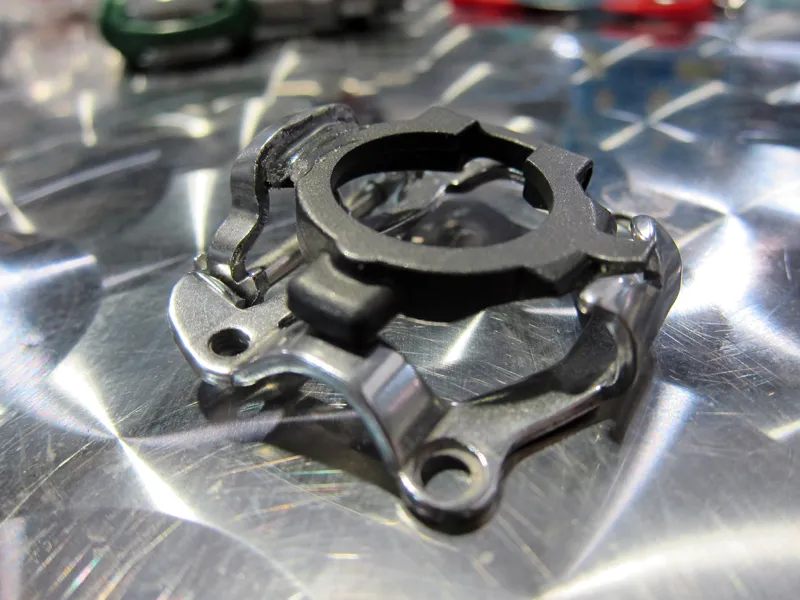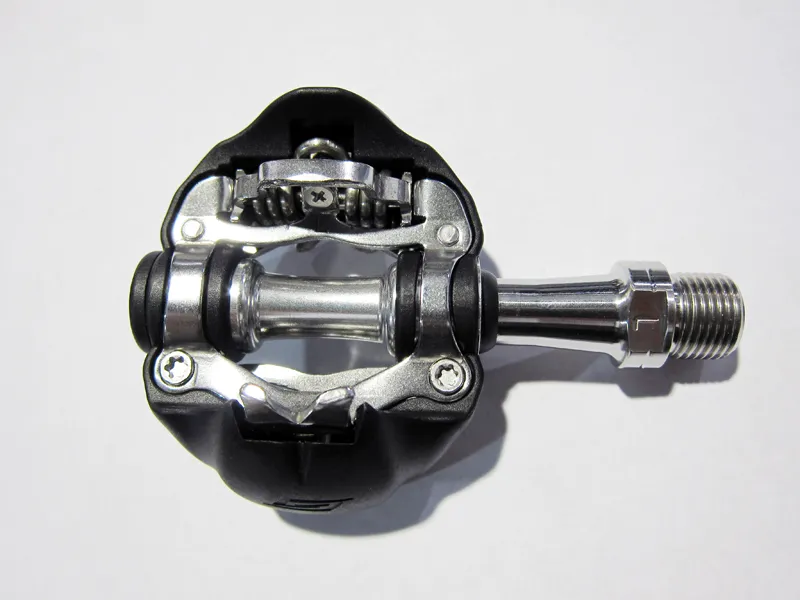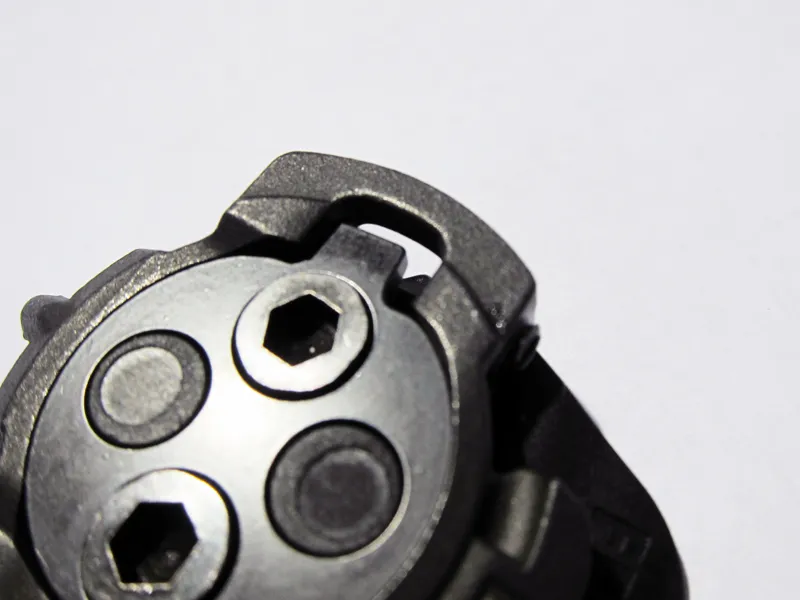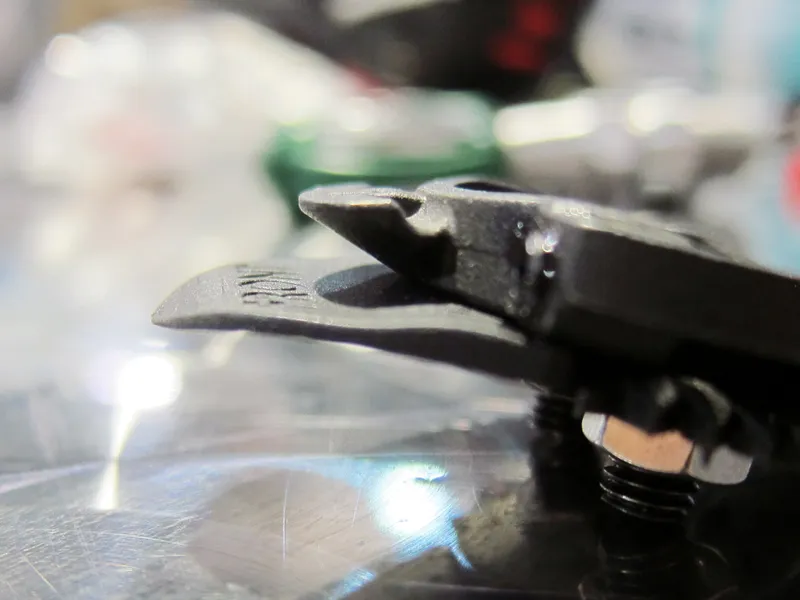Speedplay unveiled at Interbike what is essentially the final version of its long-awaited Syzr mountain bike pedal
As expected, they're fairly light at around 300g per pair with stainless steel spindles – the eventual titanium version will shed another 34g – and pretty reasonably priced at US$215 a set when they land in stores this coming January. But beyond the simple weight and cost figures lies an innovative design that, in typical Speedplay fashion, marks a fundamental shift in thinking from any other mountain bike pedal currently on the market.
The Syzr's biggest difference is how it stabilizes the rider's foot on the pedal. Unlike most designs that rely on the shoe lugs, Speedplay builds the stability directly into the cleat through two small lateral extensions that rest directly on the pedal body. When engaged, there's no slop in the cleat-pedal interface whatsoever and according to Speedplay founder Richard Bryne, the metal-on-metal also yields better power transfer since there's no rubber being squished on every pedal stroke.
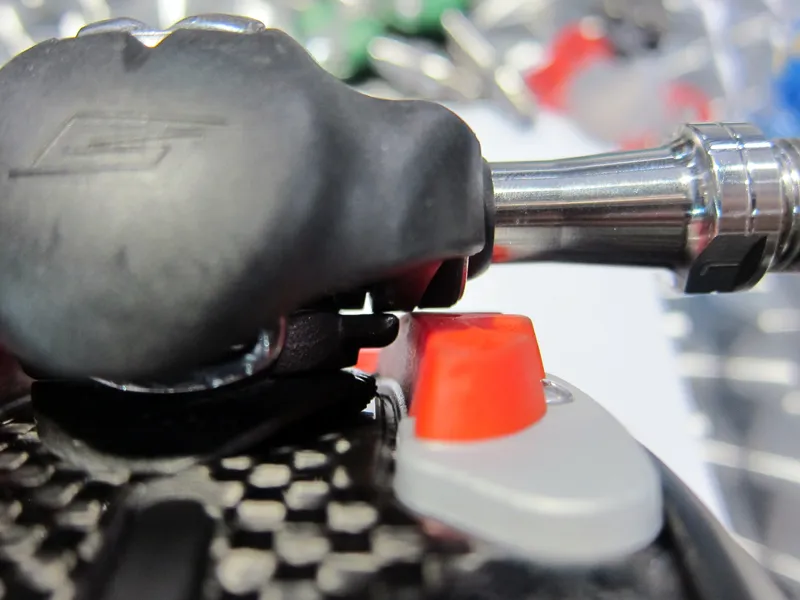
The cleat-pedal contact area is small but widely spaced
Another claimed side benefit is mud clearance. While the cleat and pedal are held tightly together, the actual amount of surface area shared between them is very small so mud is easily pushed out through the open body, as compared to shoe-on-pedal setups where there might be a lot of goop on the bottom of the shoe to push out of the way.
Just like on the road going Speedplay Zero, rotation is built into the cleat itself and the inner and outer limits of that float are adjustable via a pair of small set screws. In other words, the cleat doesn't move against the engaging jaws like on other pedal designs. Cleats should last longer as a result since they no longer move inside the jaws and even when they do wear, the tapered shape of the cleat tabs automatically account for missing material so there's never any play.
Interestingly, Bryne says a sudden epiphany just prior to last year's Interbike show led him to completely ditch the original design's single looped pivoting jaw – which ironically, was the source of the pedal's name – so while he was then reluctant to show the now-obsolete prototype, all of the buzz surrounding it forced him to do it anyway.
In contrast, this final design now completely separates the two sides of the pedal with the clamshell layout sharing no common parts. So what, you ask? Brilliantly, this means that riders – and more specifically, bike fitters – will be able to pull the two halves apart and insert wedges and shims as needed to account for slight leg length discrepancies and biomechanical alignment issues. And since each side's retention system moves in concert with each pedal body half – and since the stability is built into the pedal-cleat interface – such adjustments won't affect how the Syzr feels underfoot, nor will the cleat stick any further out of the shoe than normal.
In yet another departure from the ubiquitous SPD (and the hordes of copycats), Speedplay has flipped the positions of the fixed and floating jaws. Users still engage toe-first as usual but according to Bryne, fixing the rear jaw lends extra security when pulling hard on the pedals.
Some observers have lamented the final Syzr's additional plastic content as compared to the more metallic prototype shown last year but despite impressions, that's yet another claimed advantage of the design. Just as with chainring bashguards, Bryne insists the Syzr's plastic body is more impact tolerant than metal and also more likely to slide off of a rock instead of getting momentarily stuck.
Even better, though, Bryne says the Syzr's cleat-pedal interface and that clamshell-type plastic body yield a fully scalable pedal design. In other words, Speedplay can easily follow up the Syzr with a medium-bodied trail model or even a full-sized downhill variant – and if parts are made available, Syzr owners might even be able to make those changes at home.
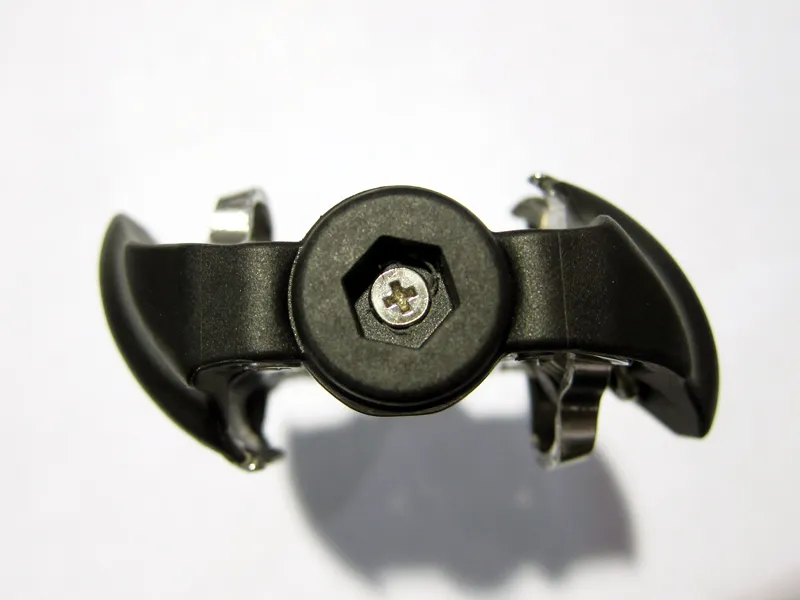
Bearing overhauls on the new Speedplay Szyr will require just a screwdriver and a grease gun
Lastly, long-term durability is promising with inboard needle bearings matched to outboard cartridge ball bearings plus built-in grease ports for easy servicing. As with other Speedplay pedals, we expect spare parts to be readily available, too.
You'll have to accept our apologies if it seems that we're gushing about this thing but faced with the expansive list of well thought-out design features, it's hard not to be impressed. We'll of course reserve final judgment until we're able to ride production samples but suffice to say this is one new product we're particularly excited about.
Just in case you're wondering, Speedplay doesn't intend for the Syzr to replace the long-running Frog. According to Bryne, that pedal has a small but devout following and it'll continue on for the foreseeable future.
New 'sizer' to go along with the new Syzr
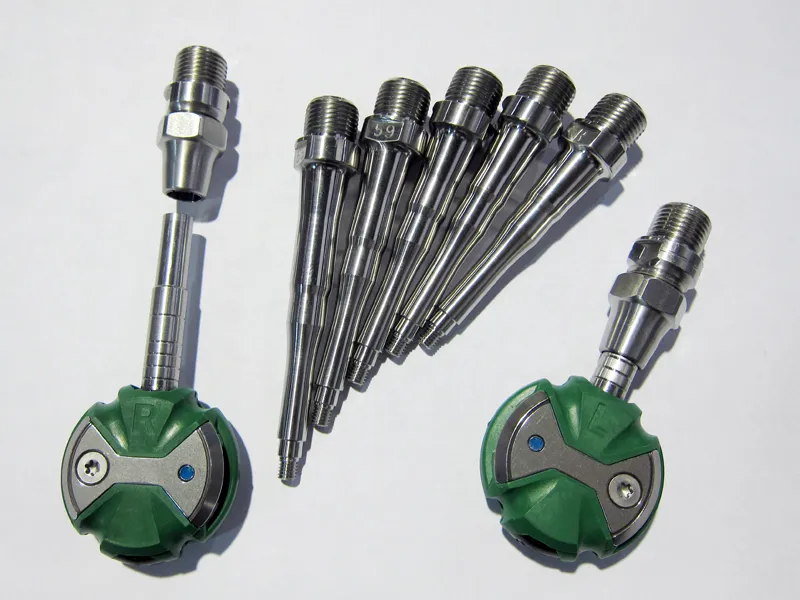
The new Speedplay Determinator adjusts to five different lengths in seconds
One final new development from Speedplay likely won't set consumers' hearts aflutter but fitters will undoubtedly love the company's new Determinator adjustable-length pedal spindle. Using a clever collet and notch system, Speedplay has managed to replace the current collection of five discrete-length spindles into a single unit that will be far quicker and easier to manage during a fit session.
Bryne says the Determinator will work with both X-series and Zero road pedals and there will ultimately be one to work with the new Syzr, too.


